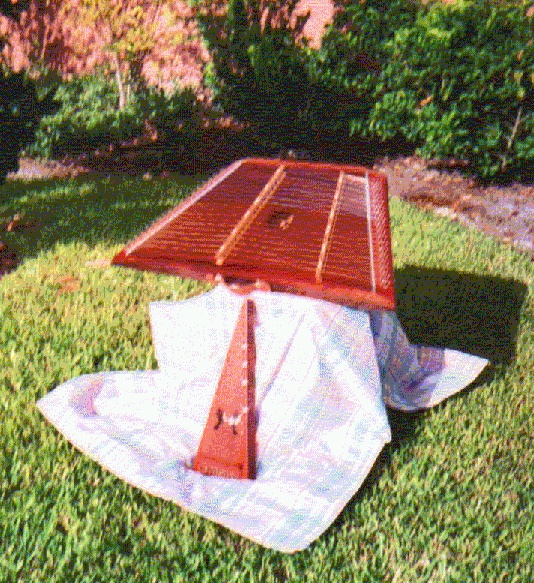Back to Top

Tuck-A-See Strings features the hammered dulcimer and the bowed psaltery. The hammered dulcimer and bowed psaltery are ancient instruments that date back about 5000 years and are mentioned in the Book of Daniel and The Book of Psalms in the Holy Bible.
The hammered dulcimer and bowed psaltery are direct ancestors of the harpsichord, which in turn led to the pianoforte, or piano for short. Depending on the model, it can have well over 100 strings stretched tightly across two bridges. Due to the tremendous pull of so many strings, the dulcimers must be carefully crafted from the world's finest hard woods.
Although the more authentic dulcimers lack a modern 12-tone chromatic scale, it does cover over two octaves of several major and minor scales, and this gives it enough accidentals (notes outside of a given scale) to adequately handle more recent music.
Unlike the piano and harpsichord, it also lacks dampers, which are the felt-tipped pads that cause the string to cease vibration in a piano when the key (or foot pedal) is released. This gives the instrument a beautiful, etheral resonance that is unmatched anywhere else in the musical family.
The strings vibrate against the bridges, which in turn vibrates against the hollow wooden soundboard. The soundboard is specially designed to maximize the resonant effects of the long-lasting notes, and can be built to larger sizes if desired. When tuned very precisely, strings that have not been struck also vibrate sympathetically, which only adds to the experience.
We will soon post music samples of this wonderous instrument for you to click and listen to.
Website by: Tim Bailey-Jones
